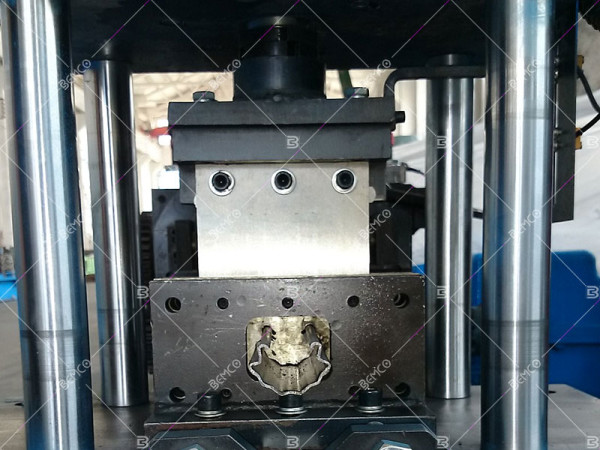Roll forming materials
Technically specking almost all the metal material can be used in roll forming.The more ductile the material is , the better it will foll form.The material is divided into type, thickness,strength and surface treatment.
Material type: Ferrous metals and non-ferrous metals, such like , steel, aluminum ,copper, they are the common used for roll forming, specially the steel roll forming,the roll formed steel parts is almost in every industry.
Material strength : the yield strength is the hardness of the material, the more harder the difficult for roll forming, because the roll forming speed and roll form tooling material will be different .The common yield strength can be from 250mpa-550mpa.
Material thickness: the thickness of the material, the more thick ,the harder for roll forming , because the roll forming speed and roll form tooling material will be different .The common thickness for roll forming will be 0.3mm-8mm.
Surface treatment: the roll forming is only the shape change of the metal, it will remain the surface treatment of the material. The common surface treatment of the material is plated, pre-painted,polished.
Material size: the roll forming process is not for infinite width and length of material, because it is hard for a super sized roll forming. The common width of the material is from 20mm to 1550mm,The length of the finished roll formed part is only restricted by the length that can be functionally handled after the finished part exits the roll forming machine.
Sometimes,a single strip can roll formed to several sections or several strips can be roll formed in one combined section. There is only one absolute material requirement for composite forming. The material must be capable of being formed at room temperature to the desired radius.
These are the basic material for roll forming, special material and requirement on the roll forming ,please contact us for more information.
Roll forming Tolerance
Tolerances are affected by material, line speed, tool quality, operator skill, measuring system and length. Typical ranges are:
Length and pre-punched features location:+/- 0.05mm to +/-1.5mm
Cross-sectional:+/- 0.05mm to +/-0.1mm
Angle : +/- 1 degree to 3 degree
Twist : Not exceed 1 degree per foot
Straightness : Not exceed 0.5mm per foot


